|
|
 |
|
| |
|
| |
| EYEWITNESS CRYSTAL & GEM : |
| |
|
|
|
|
Sphaerocobaltite |
Crocoite |
Dumortierite Bottle |
Apatite |
|
|
|
|
Cut garnets and Cut Tourmalines |
Aragonite |
Meta-tobernite |
Microcline |
|
|
|
|
Cut topazes |
Opal |
Chalcedony |
Danburite |
| |
|
|
|
| CRYSTAL GAZING: |
| |
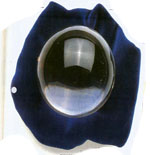 |
Crystal balls have been used for telling the future since Greek and Roman times. The fortune teller looks at the polished surface of the ball intently until they can no longer focus on the ball but see instead a curtain of mist. This enables the gazer to see “visions” in the ball, imagined in response to questions asked by the person whose fortune is being told.
Visionary:
John Dee was a charlatan of the 16th century but a favorite of Queen Elizabeth of England. He conducted many crystal gazing in which a colleague, Kelley, interpreted “visions’” in the crystal. |
|
| |
|
|
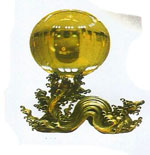 |
Eastern Promiser:
Crystal balls have been found from cultures in the Far East, the Americas, and Europe. This one comes from China.
On the Cards:
Sings of the zodiac have also been given their own gemstones. These cigarette cards of 1923 show carnelian represting Virgo and peridot representing Leo. |
|
| |
|
|
Birthstones:
The dedicating of a special stone to each month of the year was first suggested in the 1st century CE, and was linked to the twelve stones in the high Priest’s breastplate. The custom of wearing such stones became popular in the 18th century. It started in Poland and spread throughout Europe and the rest of the world.
For the Future:
Quartz is the most popular material for crystal balls but other materials which have a shiny surface, such as mirrors, polished steel, and even the surface of water, have been known to have a satisfactory effect. |
|
Changing Months:
The gem species which represent each month have varied considerably throughout history. The Roman, Arabian, Jewish and Russian cultures all favored different combinations. The group shown here is the most popular today. |
| |
|
|
|
| |
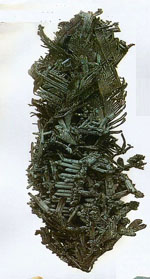 |
DENDRITIC :
The term used to describe the habit of these copper crystals is dendritic, meaning tree-like. They come from Broken Hill, New South Wales, Australia. Copper often forms in hydrothermal deposits (p. 24) filling holes in some basaltic lava flows, but is also found as grains in sandstones.
PRISMATIC :
Beryl crystals are mostly found in granite pegmatites (p. 25) and can grow to be very large. Those illustrated are prismatic - they are longer in one direction than the other. They were found in 1930 in a quarry in Maine, USA, and were over 9 m (30 ft) long.
LENTICULAR :
Twinned (p. 21) clear crystals of gypsum form the "ears" on this mass of lenticular crystals from Winnipeg, Canada. Lenticular means shaped like a lentil or lens from the Latin lenticula, a lens.
CORALLOIDAL :
Aggregated crystals that look like coral are said to have a coralloidal habit. This mass of pale-green aragonite crystals came from Eisenberg, Styria, Austria.
GLOBULAR :
These aggregated crystals of calcite look a bit like scoops of ice cream, and are described as globular, meaning spherical. The other crystals are clear quartz and the group came from Valenciana mine, Guanajuato, Mexico.
QUARTZ IN A CAVE :
Crystal growth is influenced by the physical and chemical conditions at the time. Many good crystals grow in cavities which can vary in size from small potato stones (p. 7) to huge caves, as shown in this 19th-century impression of a quartz grotto.
BLADED :
The prismatic black crystal in this group is a hornblende crystal and an example of a bladed crystal. The buff-coloured crystals are prismatic serandite and the white crystals are analcime. The group was found at Mont St Hilaire, Quebec, Canada.
|
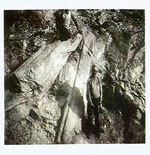 |
| |
|
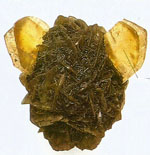 |
|
| |
|
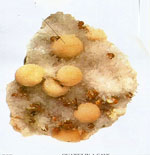 |
|
|
| |
|
|
|
CRYSTAL HEALING :
|
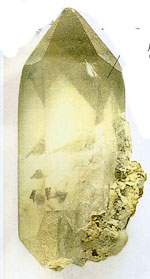 |
The laying on of stones is an ancient art. It is thought that as light reflects off the crystals and stones, the electro-magnetic field of the body, the aura, absorbs energy. The receiver can then become aware of mental and emotional causes of physical disease, and heal.
CRYSTAL CLEAR :
Rock crystals from groups such as this one from Arkansas, USA are highly prized for their beauty and clarity and are often used for crystal healing.
AMBIDEXTROUS :
In a quartz crystal, silicon and oxygen atoms are joined in the shape of a tetrahedron (a four-sided triangular pyramid). These tetrahedra are connected in a spiral arrangement, rather like a spiral staircase and can be left- or right-handed. It is this structure which accounts for the piezoelectricity of quartz.
ALPINE ARCHITECTURE :
This "twisted" group of smoky quartz crystals shows some beautiful crystal "architecture". Such crystal groups are often found in the Alps in Europe, where they are known as gwindel.
HEALING POWER :
Katrina Raphaell, shown here performing a crystal healing, is the founder of the Crystal Academy in Taos, New Mexico, USA. She has placed stones and crystals upon vital nerve points of the body.
Piezoelectricity :
Piezoelectricity was discovered by the brothers Pierre and Jacques Curie in 1880. They discovered that pressure on a quartz crystal positive and negative charges to be produced across the crystal. It was later round that an alternating electrical charge placed on a piezoelectric crystal could cause the crystal to vibrate. This is the basis of the use of quartz as oscillator plates to control radio waves, or to keep time.
PURE NECESSITY :
To meet the demand for pure, flawless quartz crystals necessary for making oscillator plates, synthetic crystals like this one are now grown by a hydrothernial process (p. 26).
WATCH PIECE :
This micro-thin quartz crystal slice is used to keep time in a quartz watch. The photograph is greatly enlarged
SPLIT-SECOND TIMING
The crystal slice in a quartz watch vibrates more than 30,000 times each second. It is this regularity of vibration which makes it a good timekeeper. |
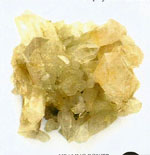 |
| |
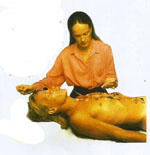 |
| |
|
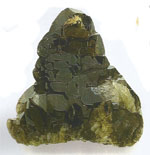 |
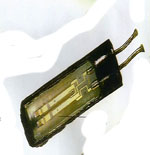 |
| |
|
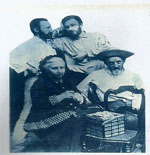 |
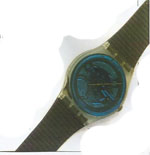 |
| |
|
|
|
| |
| IDENTIFYING GEMSTONES : |
| |
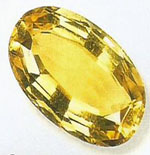 |
Citrine :
Citrine is a yellow or golden form of quartz. Natural citrine (its name comes from the word "citrus") is pale yellow, but it is extremely rare. |
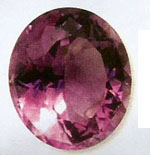 |
Amethyst :
Amethysts are purple, lilac, or mauve quartz crystals. They often have distinctive internal markings and a blue or reddish tinge when seen from different angles. |
| |
|
|
|
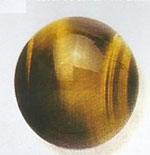 |
Tiger's Eye :
Tiger's eye is a variety of chalcedony, a type of quartz composed of tiny fibres. It has a waxy appearance and is black with yellow and golden-brown stripes. |
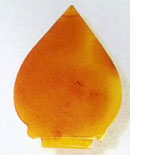 |
Carnelian :
Also called cornelian, this is a translucent, reddish-orange or brown form of chalcedony. |
| |
|
|
|
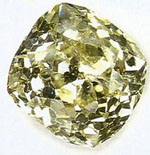 |
Diamond :
Made of pure carbon, diamond is exceptionally hard and shines brightly. It occurs in many colours, but the most popular variety is pure and colourless. |
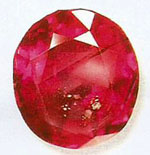 |
Ruby :
One of the most expensive gems, the classic ruby is a rich red, but it can vary in colour from pink to brown. Rubies are second in hardness only to diamonds. |
| |
|
|
|
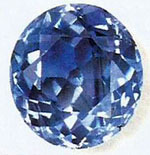 |
Sapphire :
The most valuable sapphires are a clear shade of deep blue, but they can also be yellow, green, pink, or colourless. Like ruby, sapphire is a type of corundum. |
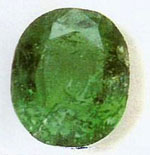 |
Emerald :
A variety of beryl, emeralds are a rich green. Only the finest gems are transparent and flawless. Most emeralds have flaws known as ajardin, the French for "garden". |
| |
|
|
|
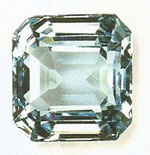 |
Aquamarine :
Another variety of beryl, aquamarine ranges in colour from pale sea-green to dark blue. It can appear to change colour when viewed from different angles. |
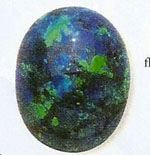 |
Opal :
Opal is known for its iridescence and flashes of colour. Iridescent opal with a dark background is called black opal. "Potch opal" is opaque, without any iridescence. |
| |
|
|
|
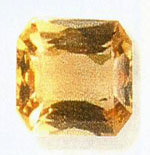 |
Topaz :
Topaz occurs in several different colours, ranging from, deep golden yellow (known as sherry topaz) and pink to blue and green. Natural pink stones are extremely rare. |
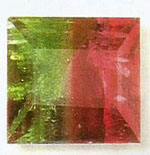 |
Tourmaline :
Tourmalines come in a range of colours, but they all have the same crystal structure. Watermelon tourmaline is so called because of its pink and green colouring. |
| |
|
|
|
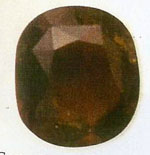 |
Garnet :
There are several different gemstones in the garnet group. The most popular for jewellery are the pyrope, which is blood-red, and the deep red almandine. |
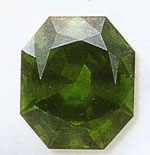 |
Peridot :
Peridot is an olive or bottle-green colour with a distinctive waxy lustre. It has strong double refraction, which means you can often see a doubling of the back facets. |
| |
|
|
|
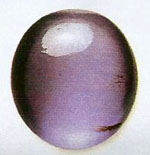 |
Moonstone :
The moonstone derives its name from its blue-white sheen, like moonshine. Some varieties are grey, yellow, pink, or green. |
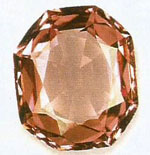 |
Spinel :
The most popular spinel is ruby-red, but it also occurs in blue and yellow. Until the 19th century, red spinels were known as Balas rubies, perhaps after their source. |
| |
|
|
|
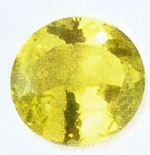 |
Chrysoberyl :
Chrysoberyl is renowned for its golden colour. One variety, called alexandrite, appears to change colour from green to light red when seen in artificial light. |
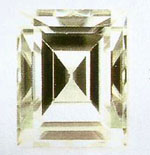 |
Peridot :
Peridot is an olive or bottle-green colour with a distinctive waxy lustre. It has strong double refraction, which means you can often see a doubling of the back facets. |
| |
|
|
|
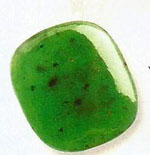 |
Jade :
Two different minerals, jadeite and nephrite, are recognized as jade. The finest quality jadeite is emerald green. Nephrite varies in colour from cream to olive Green. |
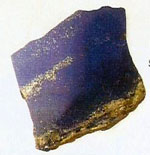 |
Lapis Lazuli :
Prized for its intense dark blue, lapis lazuli is a rock made up of several minerals. Specks or streaks of pale pyrite and calcite are often visible against the blue. |
| |
|
|
|
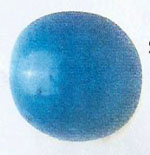 |
Turquoise :
Turquoise is valued for its intense colour, which varies from blue-green to bright blue. Opaque, it is usually cut and polished into rounded beads or cabochons. |
|
|
| |
|
|
|
| ORGANIC GEMSTONES : |
|
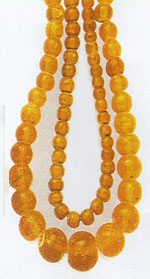 |
Unlike most other gemstones, which are mineral in origin, organic gems are derived from plants and animals. Amber, jet, coral, pearl, ivory, and shell are all organics. These materials are not stones and they are not as hard and durable as mineral gems. Instead of being cut into facets like most other gemstones, they are usually polished or carved.
Amber :
Amber is formed from the hardened resin of trees. Transparent or translucent, it is usually a golden orange colour, but it can also be a rich dark red, and occasionally contains insects and plants. |
| |
|
|
|
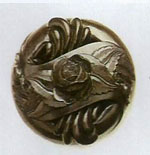 |
Jet :
Jet is a fine-grained rock formed from fossilized wood. Black or very dark brown, it is opaque with a velvety lustre. Once popular for mourning jewellery, it is often faceted and polished to a high shine. |
|
Coral :
Coral is made of the remains of coral polyps. It can be pink, red, white, or blue. Naturally dull, it shines when polished. |
| |
|
|
|
|
|
|
|
 |
 |
 |
|